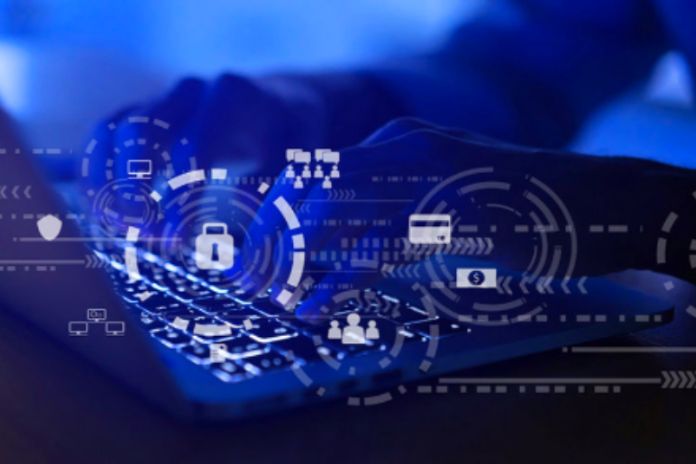Cyber Attacks: Undoubtedly, the Digital Transformation of the market has resulted in several benefits for companies – such as a gain in competitiveness, agility, cost reduction and process optimization.
However, this scenario also brought a new concern for managers: cyberattacks against the workforce. In this sense, organizations must think of ways to prevent their workforce from being victims of these attacks, compromising their performance in the market. For this, it is necessary to adopt security measures for the organization’s equipment and the activities of the employees – inside and outside the company.
With this in mind, in this article, we cover the preliminary information about the composition of the workforce that must be protected, what losses can occur as a result of cyberattacks and how to increase cybersecurity in your company. Follow up!
What Makes Up The Workforce?
A common mistake in companies that suffer from cyber attacks is to adopt protection measures only for the organization’s equipment and systems. They forget the people who use them and are usually responsible for allowing an attack, even if unintentionally, to happen.
Therefore, when analyzing what protects the workforce from cyber attacks, it is necessary to consider the organization’s employees, third parties and partners, the company’s equipment and the professionals used for work activities. Thus, mobile devices, such as cell phones and tablets, as well as virtual environments, especially those contracted from suppliers, must be considered.
What Are The Possible Losses From A Cyberattack?
The problems generated by cyber-attacks are diverse, ranging from small failures and loss of equipment with viruses and malware to significant theft of data, information and intellectual property of the business. In this sense, losses vary from small to large, and every company is susceptible to them.
Many hackers seek holes in the security of business systems to capture data and use it to request a “ransom” payment, with the threat of selling the information on the market, distributing it on the network or simply destroying it. Another common practice is to use captured items to commit digital fraud, harming the company’s customers and employees.
Finally, customer trust is a hazardous loss for organizations, which tends to decrease in cases of knowledge about cyber attacks. Insecurity and fear that their information will be compromised make consumers look for new suppliers and stop relating to the company, whose market value decreases.
How To Protect The Company From These Attacks?
Several practices can be adopted as workforce security measures against cyberattacks. Below is a list of the most efficient ones. Check out!
Use More Complex Passwords
One of the simplest and most effective practices to increase systems security is the adoption of more complex and elaborate passwords. Ideally, they should have at least eight characters and combine uppercase and lowercase letters, numbers, and symbols. Anniversaries, nearby items on the keyboard, names and common words should be avoided as hackers easily decipher them.
In addition, it is not recommended to use the same password for all accesses. Although the practice is common and functional, it increases the vulnerability of protected information. Updating passwords periodically is another indication that increases data security.
Use A Good Firewall
The first layer of protection in a network is firewalls. They work as a block for malicious content, preventing this data from being transmitted or received by system users.
Different types of firewalls are available on the market, allowing protection to be configured according to the needs of the company, team or employee hierarchy. In this sense, it is possible to prevent professionals from accessing websites or pages with specific URLs within the network, which reduces the risk to the organization’s network.
Get A Quality Antivirus
The second protection that a network must have is an antivirus. Although there are several free options, the best option is for companies to invest and purchase more sophisticated packages to increase the security of business data and information.
Update Your Programs
One of the ways hackers try to break into systems is to look for flaws and errors in their programming. Therefore, it is important to keep programs updated since updates focus on fixing vulnerabilities caused by these imperfections. In addition, it is essential not to use pirated software, systems and hardware which do not present any guarantee for the company.
Make Regular Backups
The backup consists of a copy of the company’s information. It is recommended that it be done periodically to avoid the loss of important files for the business, such as customer data, suppliers and documents. In addition, it is recommended to use cloud environments to store duplicate material, as they are more secure than local or physical options.
Protect Your Mobile Devices
Because they are more susceptible to theft and loss, mobile devices — such as notebooks, tablets and smartphones — pose a greater risk to the security of their files. For this reason, it is essential to have data encryption systems, remote formatting and blocking of use without complex passwords to prevent information from being accessed by unauthorized persons.
Train Your Team
Another critical practice to ensure your workforce is protected from cyberattacks is investing in corporate training. Employees should know which unsafe methods, such as opening unknown emails and downloading unexpected files. In addition, it is recommended that they be prepared to know what to do when they identify that a device has been infected in some way, allowing the IT team to make an efficient recovery.
Have Competent IT Professionals
The IT team is responsible for creating the entire security strategy of the company and choosing and managing the tools used in this activity. Therefore, these professionals must be well-trained, competent and knowledgeable about market trends to ensure efficient workforce protection.
Also Read: Windows Shortcut: Malware & Spam Cyberattacks Are On The Rise

